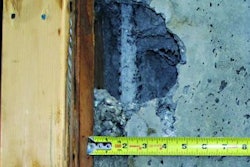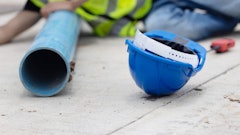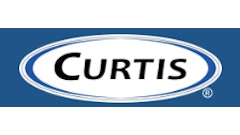Union Pacific, the nation's largest freight railroad, plans to hire 3,500 workers this year after laying off 11,000 during the recession and adding just 1,600 in 2010 despite strong revenue growth.
Farmers Insurance, the nation's third-leading writer of home and auto loans, is adding 1,600 call-center jobs in Grand Rapids, Mich., during the next three years as it expands in eastern states.
And tiny B.A. Die Mold in Aurora, Ill., which makes moldings for cars and medical devices, expects to hire two to four workers in 2011, the first additions to its 17-employee staff in three years.
All three companies say they're feeling increasingly confident in the economic recovery and need to add workers to grow. "All six of my business groups are seeing a pickup," Union Pacific CEO Jim Young says. "To me that says there's some legs" to the recovery.
For the first time since the Great Recession began more than three years ago, the job market is expected to show strong gains this year as consumers spend more and businesses cast off their hesitancy to hire. The government's report today on December employment may be a prelude -- an expected gain of 150,000 jobs, according to a consensus of economists.
Through 2011, employers will add 183,000 jobs a month -- more than double last year's pace, according to the average forecast of 28 economists surveyed by USA TODAY. Where will the jobs be? Almost everywhere.
Every state and 98% of the nation's metro areas will see at least small job gains this year, according to an in-depth forecast by economic researchers Moody's Analytics. New Mexico, Florida and Texas will lead the way on a percentage basis, while New Jersey and Vermont are projected to see modest growth in jobs.
The gains will touch every sector of the economy except government, generating low-wage retail and hotel jobs as well as higher-paying positions for accountants, engineers and architects.
This year's hiring should lower the 9.8% jobless rate to 8.9% or so by the end of the year, Moody's Analytics says. That would still leave about 13 million Americans jobless by year's end and many economists say it will take at least five years for unemployment to return to its normal 5% to 6% rate.
Moody's predicts the biggest beneficiaries of the payroll gains will be the leisure and hospitality industry as consumers open their wallets wider; professional and businesses services, a broad category that includes lawyers, accountants and temporary workers; and eventually, construction, as housing supplies dwindle. Each is expected to increase employment about 3.7% in the 12 months ending Sept. 30. Education and health services are projected to grow 2.9%.
Manufacturing, which lost 2.2 million jobs in the slump -- about 16% of its workforce -- is projected to grow a more modest 1.2%. That's still noteworthy for an industry that has been shrinking for decades because of automation and the loss of jobs to nations where production costs are lower.
Government, traditionally a bastion of secure employment, will shrink this year as budget-strapped state and local governments cut 1.1% of their payrolls, Moody's forecasts.
Where growth will be hottest
Some states hammered by the housing crisis will be big job-gainers, Moody's says. It forecasts that Florida's healthy tourism industry and recovering construction industry will help power a 3.2% increase in payrolls in the Sunshine State by fall.
Texas, whose oil industry and relatively unscathed housing sector minimized job losses and drew new residents in the downturn, should continue to be a jobs hot spot, with employment increasing 3.1%.
Southern and Midwestern manufacturing strongholds that suffered big job losses, including Ohio, Michigan and Georgia, will grow jobs, although more slowly. So will Arizona and California, which were decimated by the housing crash and are still burdened by the real estate malaise.
Other areas, such as South Dakota, Massachusetts and Washington, D.C., will add jobs at a more modest pace because they lost fewer in the downturn.
Unemployed Americans are feeling the improvement. Rick Reiner, 54, of Clarendon Hills, Ill., lost his job as operations vice president for a maker of scientific analytical equipment in May 2009. After getting about three interviews the first 12 months, he landed a job as operations manager for an energy equipment maker in October.
Job postings recently "were far more real than they had been," he says. Before, many employers "really weren't sure they wanted to go with the position."
Reiner, who drew $50,000 from savings and virtually stopped eating out while he was unemployed, says, "For several days it was like Christmas. I'd gotten so used to driving past places where my wife and I used to be able to go."
Yet the 2% payroll gains, though healthy, will be about half the additions that followed similarly severe recessions in the 1970s and 1980s. Even with the expected job growth, by fall employment will be down 5.1 million from its December 2007 peak.
Even so, there's no question the 2011 job market looks more promising than last year's halting comeback, especially with job growth building in the second half of this year. One reason: Businesses are simply growing less worried that another unforeseen calamity will derail the economic recovery -- much as the European debt crisis curtailed surging job growth early last year.
"What businesses went through was pretty wrenching," says Mark Zandi, chief economist of Moody's Analytics. "That nightmare will fade."
Further bolstering business confidence is the tax-cut deal passed by Congress, which maintains lower rates and cuts payroll taxes to spur consumer spending.
Meanwhile, firms that stayed profitable in the slump by slashing costs must now invest more of their record cash trove -- $1.9 trillion for non-financial firms -- to grow. They "can't continue to maintain earnings growth by cutting costs," Zandi says.
At the same time, productivity gains that let employers wring more from fewer employees are petering out. And credit conditions are easing a bit for small businesses, which create two-thirds of new jobs in an upswing.
Forty-five percent of CEOs surveyed by the Business Roundtable late last year plan to increase hiring this year, up from 31% in the third quarter survey.
That's a big improvement, but it underscores that job gains won't be roaring because many companies remain cautious and are holding down costs.
Allied PhotoChemical of Kimball, Mich., which makes protective coatings, saw sales rise 47% last year and expects another 40% increase this year. But instead of adding an engineer, the company is paying student contractors from a local university engineering program to work on individual projects, CEO Michael Kelly says.
With lenders tight-fisted, "We decided to conserve cash," he says. "I'd rather be prepared for the worst."
Such prudence is leaving many job-seekers frustrated. Kathy Robinson, 53, of Holley, N.Y., has been looking for an accounting position since she was laid off in November 2009. Robinson, who handles accounts payable, says many companies have combined such jobs with higher-level accounting duties for which she isn't qualified.
"I just wish they'd start creating jobs," she says.
Anecdotal evidence shows many employers are picking up the pace. Thirty-seven members of the Executive Network Group of Greater Chicago landed jobs in the 30 days ending Dec. 15, double the previous rate, group head Chris Campbell says.
Staffing firm Manpower says conversions of temporary workers to permanent staffers rose about 10% in the third quarter, up from about 4% the previous quarter. Companies so far have relied more heavily on temporary workers to meet growing demand and have been slow to convert them to staffers. Manpower CEO Jeff Joerres also says last year's burst in factory hiring is spreading to office and professional workers, including accountants, graphic artists and computer professionals.
Companies that combined jobs in computers and finance, for example, are finding that they now must hire, says Brett Good, a district president for staffing firm Robert Half International. "Some (positions) were held together with gray tape," he says.
Yet with unemployment high, businesses continue to be picky, holding out for the ideal candidate, says Roy Krause, CEO of placement firm Spherion. That helps explain why government data show job openings still rising far more sharply than hirings.
And jobs in real-estate related sectors, such as construction and commercial banking, continue to be scarce, says David Hoffman, CEO of executive search firm DHR International.
Economy has 'bottomed out'
Still, most industries have little choice but to ramp up hiring. Union Pacific is spending a record $3.2 billion this year on capital investment, including 100 new locomotives and increased track capacity. Its 3,500 job additions will include electricians, mechanics and signal workers.
The company's carload volumes rose 14% last year and it anticipates a smaller jump this year. But Young expects 3,000 of its 43,000 employees to retire this year after many put off retirement the past two years because spouses were laid off or the recession pummeled their retirement portfolios.
Young says he was further heartened by the tax-cut package.
"Getting that behind us gives me confidence when we're looking at hiring," he says.
Farmers Insurance stayed profitable in the recession by cutting staff and it kept employment flat last year. Now, the firm, among the leading insurance carriers in many of its western markets, must infiltrate the eastern U.S. to boost revenue, says CEO Robert Woudstra. It's also aiming to take advantage of surging auto sales.
"The economy, I believe, has bottomed out," Woudstra says.
Farmers' Michigan hiring binge, which includes 500 new jobs this year, is providing work to a slew of unemployed residents in one of the states hit hardest by the downturn. Among them is Tom O'Brien, who landed a job as a call center-rep last month, ending a demoralizing nine-month search since he left his position managing his family's delicatessen early last year because of a family conflict.
The Lowell, Mich., resident sent out more than 200 resumes, mostly for food-service jobs but had few responses. Then, he heard about Farmers' November job fair. He'll be starting at $30,000 a year, far less than the $75,000 he earned in the deli. But he'd like to get a master's in management and move up.
"I learned it's going to take a job to get a good job," he says.
Fast-growing companies in health care and technology are also ratcheting up staffing.
Best Doctors, which helps employers make sure workers receive the correct diagnoses, plans to hire at least 100 this year -- largely in marketing, information technology and administration, company President Evan Falchuk says. The company added 68 in 2010.
"We're kind of riding this trend of quality health care," he says.
The warming hiring climate means even those still job-hunting are getting more nibbles.
Brittany Sykes, who is seeking a public relations job after graduating from Penn State University in May, got no responses to the 70 resumes she sent last spring and summer. But the Harrisburg, Pa., resident had two interviews and several less formal get-togethers with employers in New York City last month.
"People are starting to be interested in meeting me," Sykes says.



















